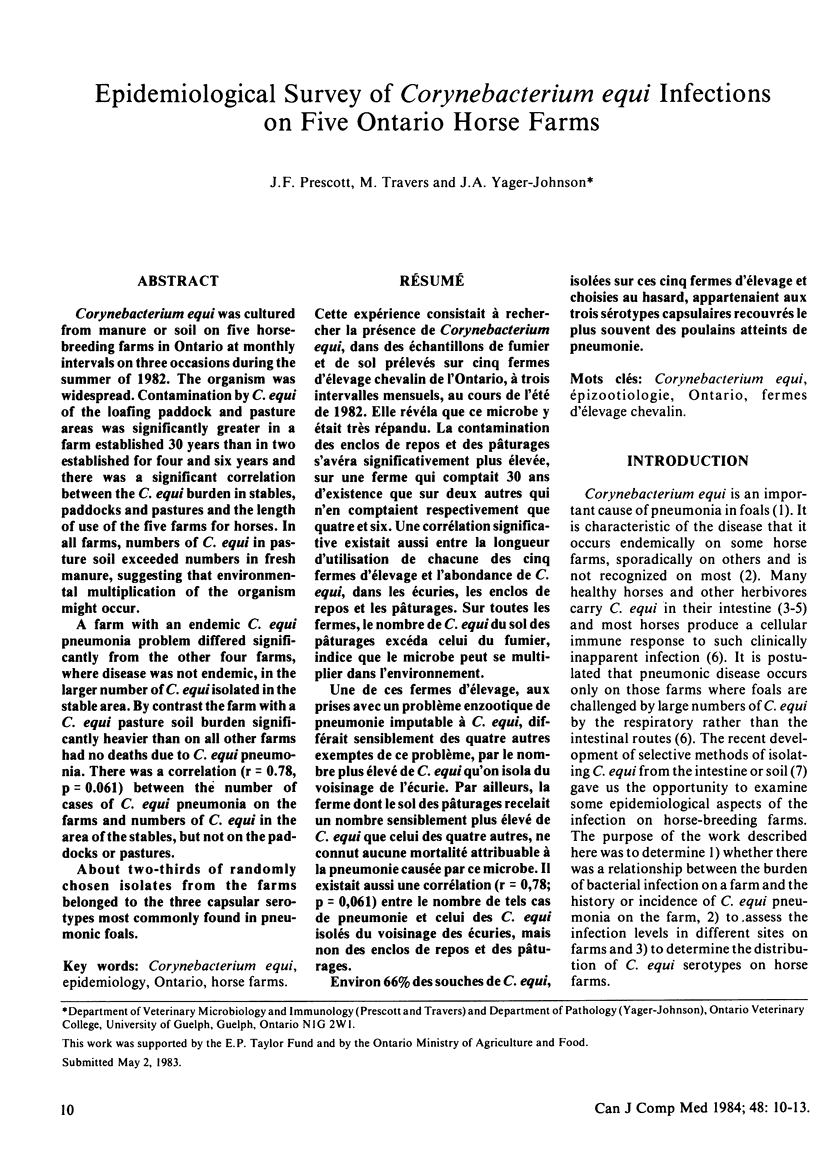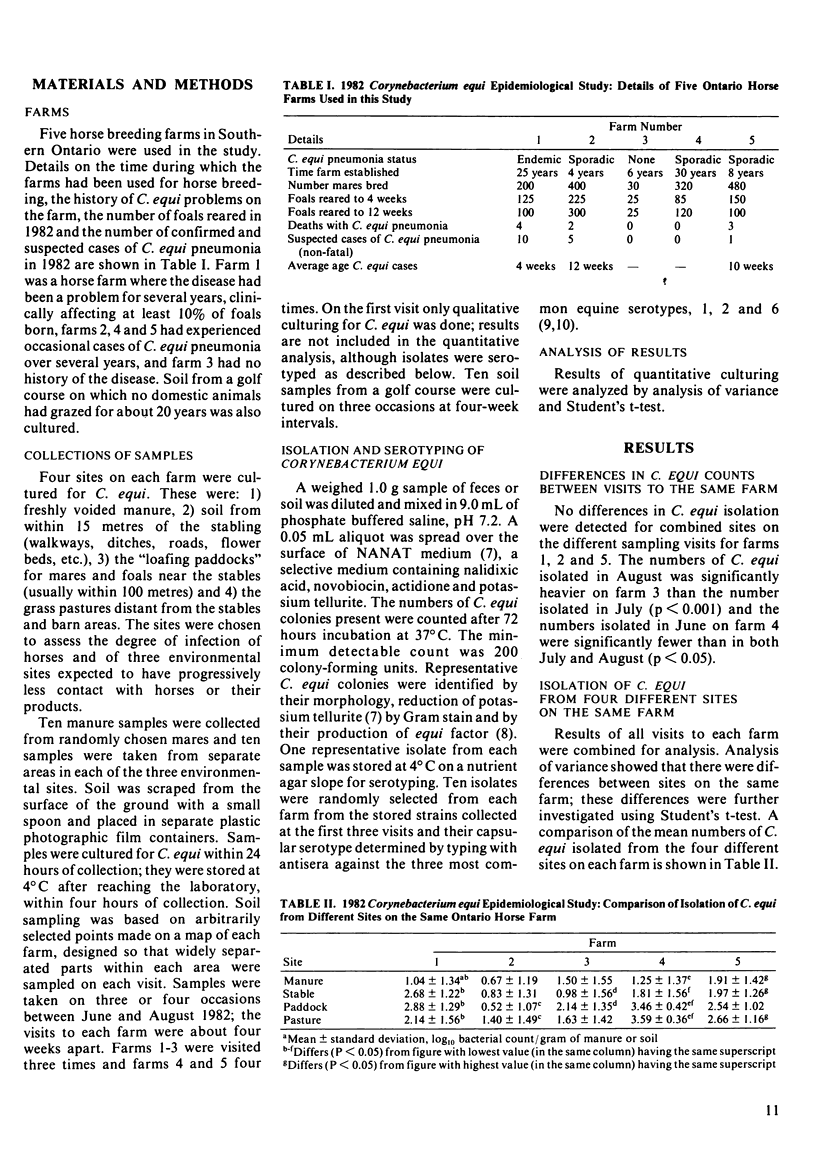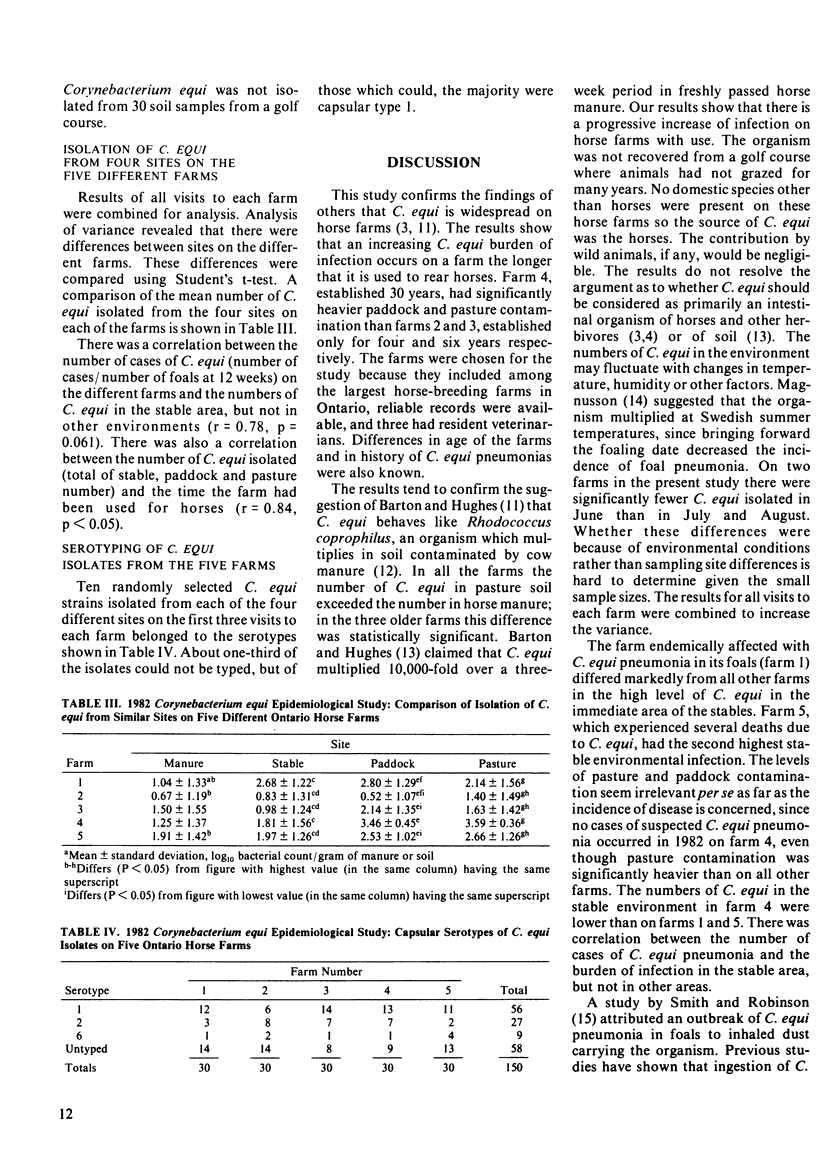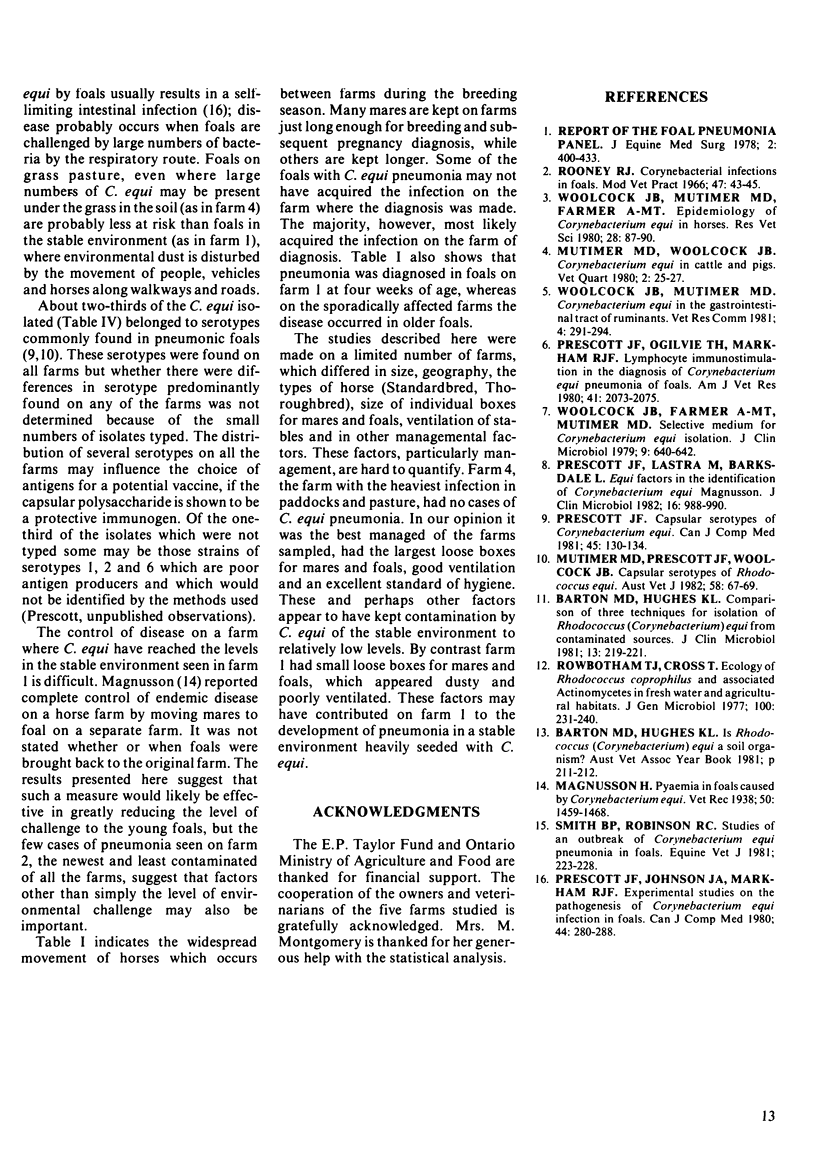Abstract
Corynebacterium equi was cultured from manure or soil on five horse-breeding farms in Ontario at monthly intervals on three occasions during the summer of 1982. The organism was widespread. Contamination by C. equi of the loafing paddock and pasture areas was significantly greater in a farm established 30 years than in two established for four and six years and there was a significant correlation between the C. equi burden in stables, paddocks and pastures and the length of use of the five farms for horses. In all farms, numbers of C. equi in pasture soil exceeded numbers in fresh manure, suggesting that environmental multiplication of the organism might occur. A farm with an endemic C. equi pneumonia problem differed significantly from the other four farms, where disease was not endemic, in the larger number of C. equi isolated in the stable area. By contrast the farm with a C. equi pasture soil burden significantly heavier than on all other farms had no deaths due to C. equi pneumonia. There was a correlation (r = 0.78, p = 0.061) between the number of cases of C. equi pneumonia on the farms and numbers of C. equi in the area of the stables, but not on the paddocks or pastures. About two-thirds of randomly chosen isolates from the farms belonged to the three capsular serotypes most commonly found in pneumonic foals.
Full text
PDF



Selected References
These references are in PubMed. This may not be the complete list of references from this article.
- Barton M. D., Hughes K. L. Comparison of three techniques for isolation of Rhodococcus (Corynebacterium) equi from contaminated sources. J Clin Microbiol. 1981 Jan;13(1):219–221. doi: 10.1128/jcm.13.1.219-221.1981. [DOI] [PMC free article] [PubMed] [Google Scholar]
- Mutimer M. D., Prescott J. F., Woolcock J. B. Capsular serotypes of Rhodococcus equi. Aust Vet J. 1982 Feb;58(2):67–69. doi: 10.1111/j.1751-0813.1982.tb02691.x. [DOI] [PubMed] [Google Scholar]
- Mutimer M. D., Woolcock J. B. Corynebacterium equi in cattle and pigs. Tijdschr Diergeneeskd. 1980 Jan 15;105(2):25–27. [PubMed] [Google Scholar]
- Prescott J. F. Capsular serotypes of Corynebacterium equi. Can J Comp Med. 1981 Apr;45(2):130–134. [PMC free article] [PubMed] [Google Scholar]
- Prescott J. F., Johnson J. A., Markham R. J. Experimental studies on the pathogenesis of Corynebacterium equi infection in foals. Can J Comp Med. 1980 Jul;44(3):280–288. [PMC free article] [PubMed] [Google Scholar]
- Prescott J. F., Lastra M., Barksdale L. Equi factors in the identification of Corynebacterium equi Magnusson. J Clin Microbiol. 1982 Nov;16(5):988–990. doi: 10.1128/jcm.16.5.988-990.1982. [DOI] [PMC free article] [PubMed] [Google Scholar]
- Prescott J. F., Ogilvie T. H., Markham R. J. Lymphocyte immunostimulation in the diagnosis of Corynebacterium equi pneumonia of foals. Am J Vet Res. 1980 Dec;41(12):2073–2075. [PubMed] [Google Scholar]
- Smith B. P., Robinson R. C. Studies of an outbreak of Corynebacterium equi pneumonia in foals. Equine Vet J. 1981 Oct;13(4):223–228. doi: 10.1111/j.2042-3306.1981.tb03500.x. [DOI] [PubMed] [Google Scholar]
- Woolcock J. B., Farmer A. M., Mutimer M. D. Selective medium for Corynebacterium equi isolation. J Clin Microbiol. 1979 May;9(5):640–642. doi: 10.1128/jcm.9.5.640-642.1979. [DOI] [PMC free article] [PubMed] [Google Scholar]
- Woolcock J. B., Mutimer M. D. Corynebacterium equi in the gastrointestinal tract of ruminants. Vet Res Commun. 1981 Apr;4(4):291–294. doi: 10.1007/BF02278506. [DOI] [PubMed] [Google Scholar]
- Woolcock J. B., Mutimer M. D., Farmer A. M. Epidemiology of Corynebacterium equi in horses. Res Vet Sci. 1980 Jan;28(1):87–90. [PubMed] [Google Scholar]


